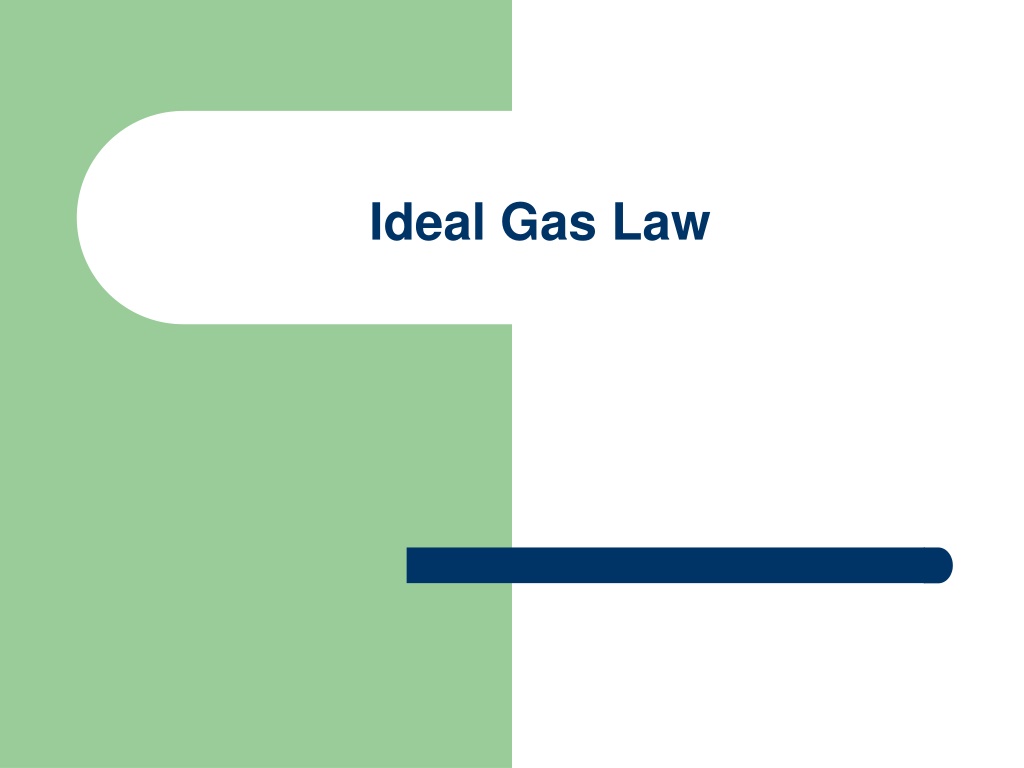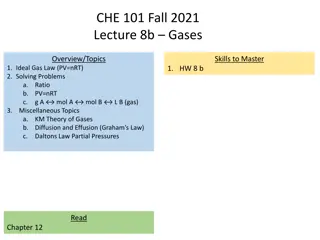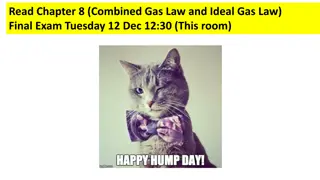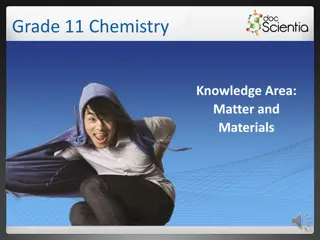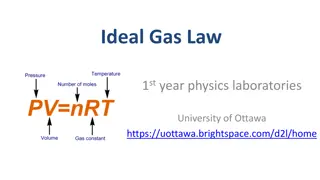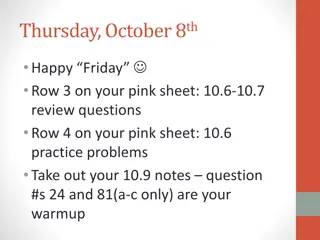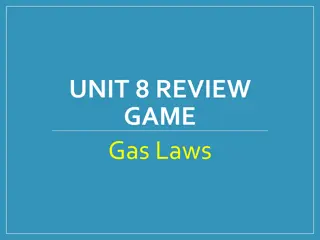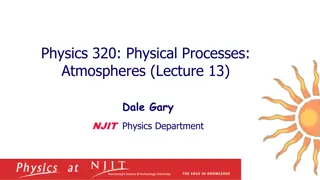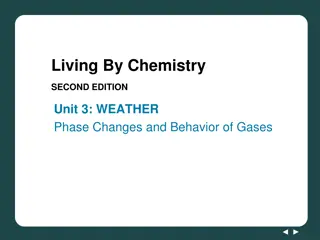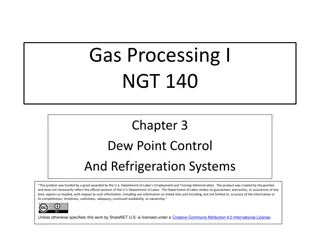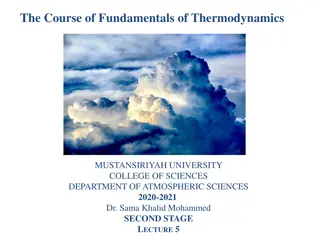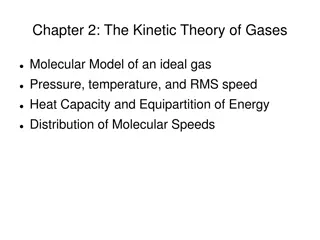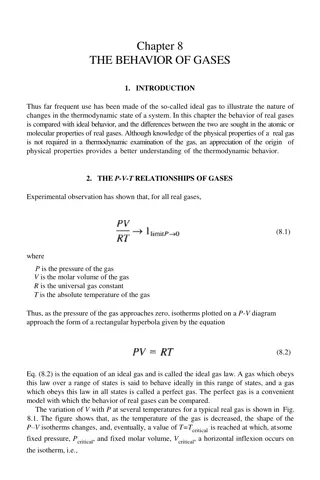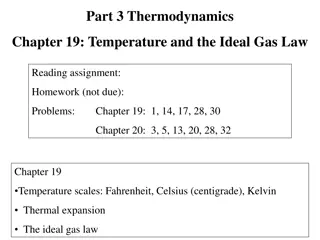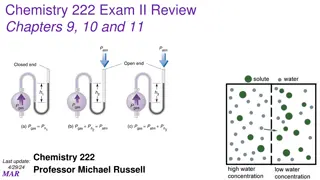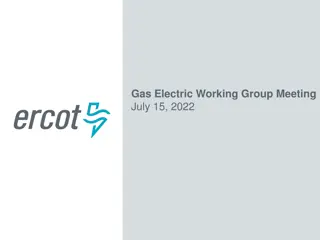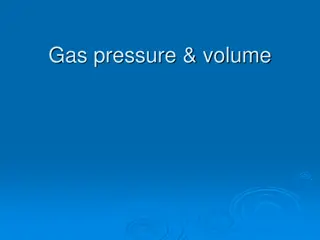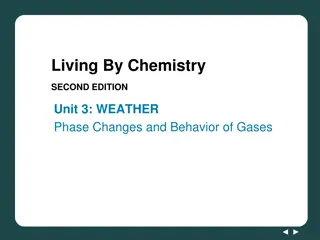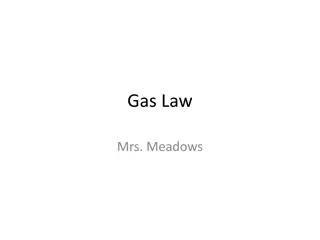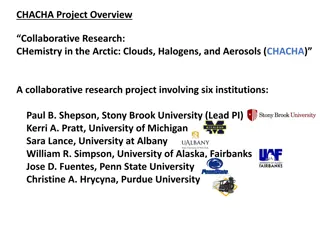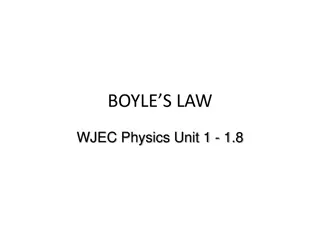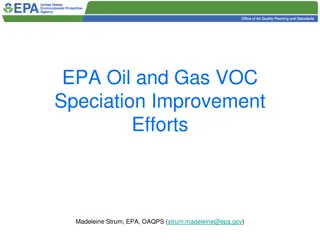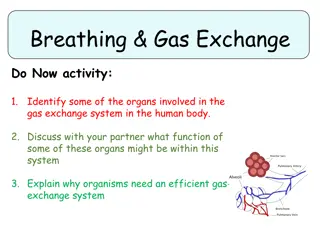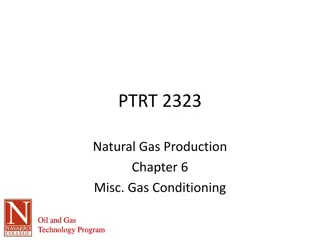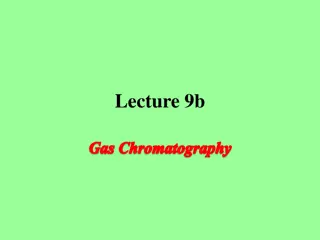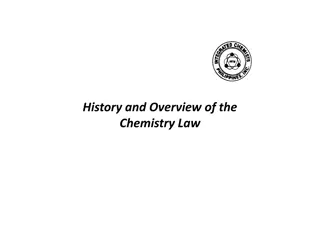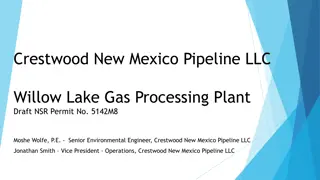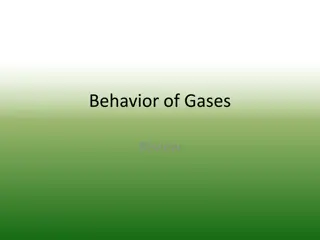Understanding the Ideal Gas Law in Chemistry
Exploring the concept of the Ideal Gas Law, its derivation from the combined gas law, conversion of pressures, practical applications through problem-solving examples, and the significance of the gas constant (R) in calculations. Learn how to use the Ideal Gas Law formula (PV = nRT) to solve for various gas properties like volume, pressure, temperature, and moles in different scenarios.
Download Presentation

Please find below an Image/Link to download the presentation.
The content on the website is provided AS IS for your information and personal use only. It may not be sold, licensed, or shared on other websites without obtaining consent from the author. Download presentation by click this link. If you encounter any issues during the download, it is possible that the publisher has removed the file from their server.
E N D
Presentation Transcript
Ideal Gas Law For every problem we have done, we also could have used the ideal gas law. On the test, you will have to do a couple of problems with the combined gas law, some with the ideal gas law and then you will be able to choose which law you want to use.
Ideal gas law can be derived from the combined gas law PV/T = PV/T n (22.4) = Volume of any gas at STP (n is the number of moles) plug this into combined gas law for initial state. PV/T = (101.2 kPa) (n 22.414 L) / 273 K PV = n (8.31 kPa L/K mol) T 8.31 kPa L/K mol is the ideal gas constant for these units. It is abbreviated R (using kPa for pressure)
The equation PV = nRT *R can also be .0821 atm L/K mol *R can also be 62.4 torr L/K mol The units of R must match the other units in the problem. If you are using 8.31 kPa L/K mol, your units are: kPa(L) = mol (8.31 kPa L/K mol) K
Converting pressures Use the standard pressures as a conversion factor 1.00 atm = 101 kPa = 760. torr convert 135 kPa to atm 135 kPa x 1 atm / 101 kPa = 1.34 atm convert 768 torr to kPa 768 torr x 101 kPa / 760 torr = 102 kPa
Using the ideal gas law What volume will .76 mol of a gas occupy at .82 atm and 264 K? PV = nRT 0.82 atm x 101kPa / 1.00 atm = 82.82 kPa 82.82kPa V = 0.76 mol (8.31 kPa L/K mol )264 K V = 20. L
Ideal Gas Law Problem If a gas occupies 14 L at 135 kPa and 285 K, what volume will it occupy at STP? PV = nRT 135 kPa (14 L) = n 8.31 kPa L/K mol (285 K) n = .798 mol .798 mol x 22.4 L / 1 mol = 18 L
or you can also take the .798 mol and plug it back into PV = nRT (you would have to do this if you were not going to STP) 101 kPa V= (.798 mol) 8.31 (273 K) V = 18 L (still)
Number 1 1.54 mol of helium will occupy what volume at 92 kPa and 315 K? PV = nRT
Number 1 1.54 mol of helium will occupy what volume at 92 kPa and 315 K? PV = nRT 92 KPa V = 1.54 mol (8.31) 315K V = 44 L
Number 2 126 mL of nitrogen at 113 kPa and 39oC will occupy what volume at STP? PV= nRT
Number 2 126 mL of nitrogen at 113 kPa and 39oC will occupy what volume at STP? PV= nRT .126 L (113 kPa)= n(8.31)312K n = .00549 mol x 22.4L/1 mol V = .123 L (123 mL)
Number 3 2.14 g of NH3, ammonia, will occupy what volume at 795 torr and 315 K?
Number 3 2.14 g of NH3, ammonia, will occupy what volume at 795 torr and 315 K? 2.14 g x 1 mol/17.034 g = .125mol 795 torr x101 kPa/760 torr =105.65 kPa PV = nRT 105.65 V = .125 mol (8.31) 315K V = 3.10 L
Number 4 CH3OH + O2 H2O + CO2 What volume of carbon dioxide will 5.2 g oxygen produce at 1.2 atm and 299 K?
Number 4 CH3OH + O2 H2O + CO2 2 3 4 2 What volume of carbon dioxide will 5.2 g oxygen produce at 1.2 atm and 299 K? 5.2 g O2 1 mol O2 32.00 g O2 2 mol CO2 3 mol O2 =.108 mol 1.2 atm x 101 kPa/1.00 atm = 121.2 kPa 121.2 kPa V = .108 (8.31) 299K V = 2.2 L
Number 5 HCl + Co CoCl3 + H2 What volume of hydrogen gas will 5.2 g cobalt produce at 97 kPa and 285 K?
Number 5 HCl + Co CoCl3 + H2 What volume of hydrogen gas will 5.2 g cobalt produce at 97 kPa and 285 K? 5.2 g Co 1 mol Co 6 2 2 3 3 mol H2 58.93 g Co 2 mol Co .132.. mol 97 V= .132mol(8.31)285K V = 3.2 L
